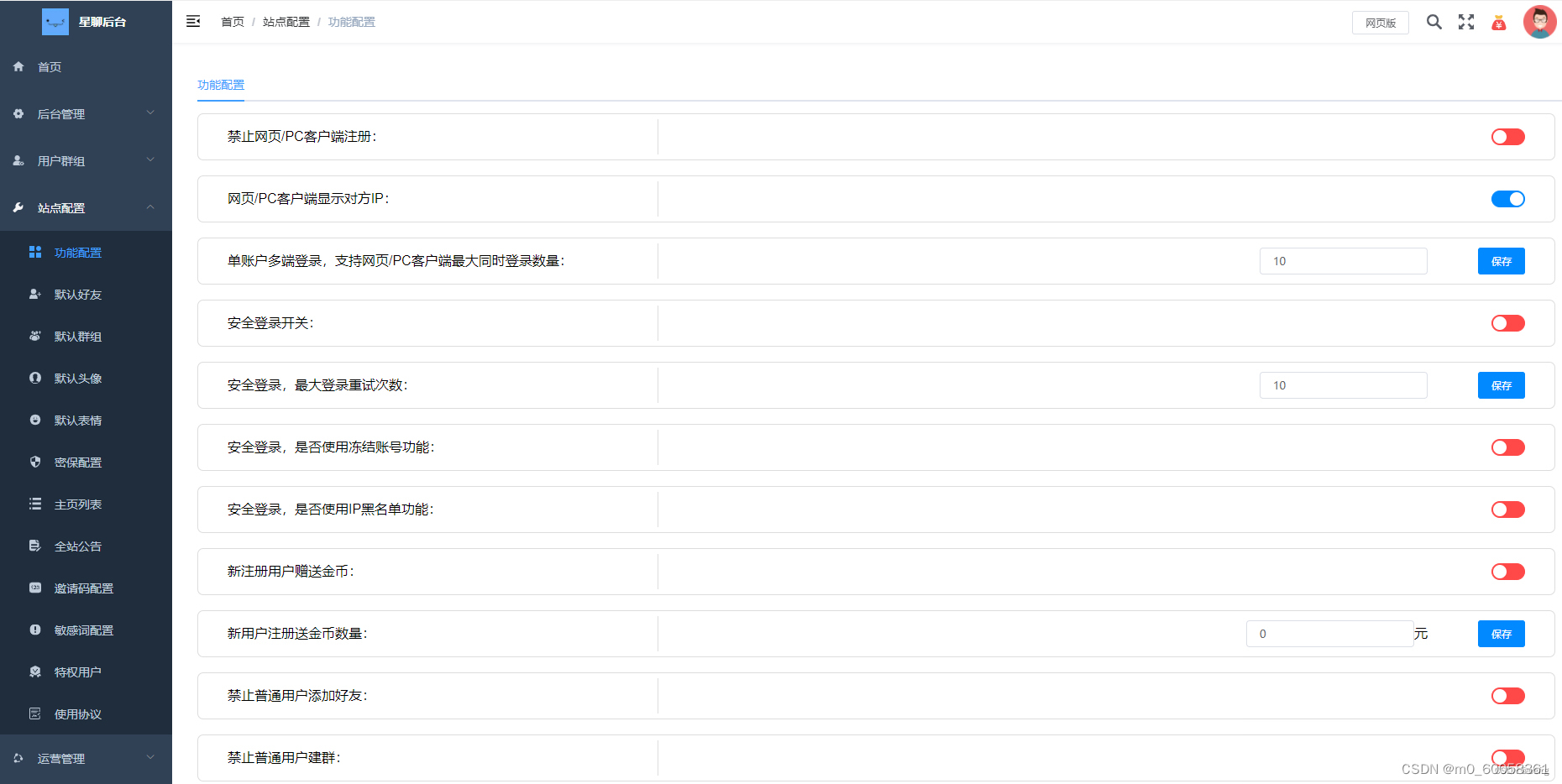1.maven引入相关依赖
<dependencies>
<!-- spring-boot-starter-data-redis -->
<dependency>
<groupId>org.springframework.boot</groupId>
<artifactId>spring-boot-starter-data-redis</artifactId>
</dependency>
<!-- commons-pool2 -->
<dependency>
<groupId>org.apache.commons</groupId>
<artifactId>commons-pool2</artifactId>
<version>2.11.1</version>
</dependency>
<!--jackjson-->
<dependency>
<groupId>com.fasterxml.jackson.core</groupId>
<artifactId>jackson-databind</artifactId>
</dependency>
<!--lombok-->
<dependency>
<groupId>org.projectlombok</groupId>
<artifactId>lombok</artifactId>
<optional>true</optional>
</dependency>
<!--junit-->
<dependency>
<groupId>org.springframework.boot</groupId>
<artifactId>spring-boot-starter-test</artifactId>
<scope>test</scope>
</dependency>
</dependencies>
2.配置redis
application.yml
spring:
# 配置redis
redis:
host: 192.168.***.***
port: 6379
password: ******
lettuce:
pool:
max-active: 8 # 连接池最大连接数(使用负值表示没有限制)
max-idle: 8 # 连接池中的最大空闲连接
max-wait: 100 # 连接池最大阻塞等待时间(使用负值表示没有限制)
min-idle: 0 # 连接池中的最小空闲连接
database: 0 # redis数据库索引(默认为0)3.配置序列化
package com.example.config;
import org.springframework.context.annotation.Bean;
import org.springframework.context.annotation.Configuration;
import org.springframework.data.redis.connection.RedisConnectionFactory;
import org.springframework.data.redis.core.RedisTemplate;
import org.springframework.data.redis.serializer.GenericJackson2JsonRedisSerializer;
import org.springframework.data.redis.serializer.RedisSerializer;
/**
* Redis 序列化方式配置
*
*/
@Configuration
public class RedisConfig {
@Bean
public RedisTemplate<String, Object> redisTemplate(RedisConnectionFactory factory) {
// 创建RedisTemplate<String, Object>对象
RedisTemplate<String, Object> template = new RedisTemplate<>();
// 配置连接工厂
template.setConnectionFactory(factory);
// json方式序列化对象
GenericJackson2JsonRedisSerializer jsonRedisSerializer =
new GenericJackson2JsonRedisSerializer();
// key采用String的序列化方式
template.setKeySerializer(RedisSerializer.string());
// hash的key也采用String的序列化方式
template.setHashKeySerializer(RedisSerializer.string());
// value序列化方式采用jackson
template.setValueSerializer(jsonRedisSerializer);
// hash的value序列化方式采用jackson
template.setHashValueSerializer(jsonRedisSerializer);
return template;
}
}
4.测试类中进行测试
package com.example;
import com.example.entity.User;
import com.fasterxml.jackson.core.JsonProcessingException;
import com.fasterxml.jackson.databind.ObjectMapper;
import org.junit.jupiter.api.Test;
import org.springframework.beans.factory.annotation.Autowired;
import org.springframework.boot.test.context.SpringBootTest;
import org.springframework.data.redis.core.RedisTemplate;
import org.springframework.data.redis.core.StringRedisTemplate;
@SpringBootTest
class SpringDataRedisTestApplicationTests {
@Autowired
private RedisTemplate<String,Object> redisTemplate;
@Autowired
private StringRedisTemplate stringRedisTemplate;
private static final ObjectMapper objectMapper = new ObjectMapper();
/**
* 测试redis的String类型
*/
@Test
void testString() {
redisTemplate.opsForValue().set("name", "minqiliang");
System.out.println(redisTemplate.opsForValue().get("name"));
}
/**
* 使用StringRedisTemplate操作redis(需要手动进行序列化和反序列化)
* @throws JsonProcessingException
*/
@Test
void testString2() throws JsonProcessingException {
// 创建一个对象
User user = new User("001", "minqiliang", 18);
// 由于StringRedisTemplate默认使用的是String的序列化器,所以这里需要将对象转换成json字符串
String json = objectMapper.writeValueAsString(user);
// 存入redis
stringRedisTemplate.opsForValue().set("user:001", json);
// 从redis中取出数据
String s = stringRedisTemplate.opsForValue().get("user:001");
// 将json字符串转换成对象
User u = objectMapper.readValue(s, User.class);
System.out.println(u);
}
@Test
void testHash() {
// 存入redis
redisTemplate.opsForHash().put("user:002", "id", "002");
redisTemplate.opsForHash().put("user:002", "name", "张三");
redisTemplate.opsForHash().put("user:002", "age", 18);
// 获取对应的key的所有值
System.out.println(redisTemplate.opsForHash().entries("user:002"));
System.out.println("====================================");
// 获取对应的key的某个值
System.out.println(redisTemplate.opsForHash().get("user:002", "id"));
System.out.println(redisTemplate.opsForHash().get("user:002", "name"));
System.out.println(redisTemplate.opsForHash().get("user:002", "age"));
}
}到此这篇关于springboot中操作redis实例分享的文章就介绍到这了,更多相关springboot中操作redis内容请搜索萤火虫技术以前的文章或继续浏览下面的相关文章希望大家以后多多支持萤火虫技术!




发表评论 取消回复